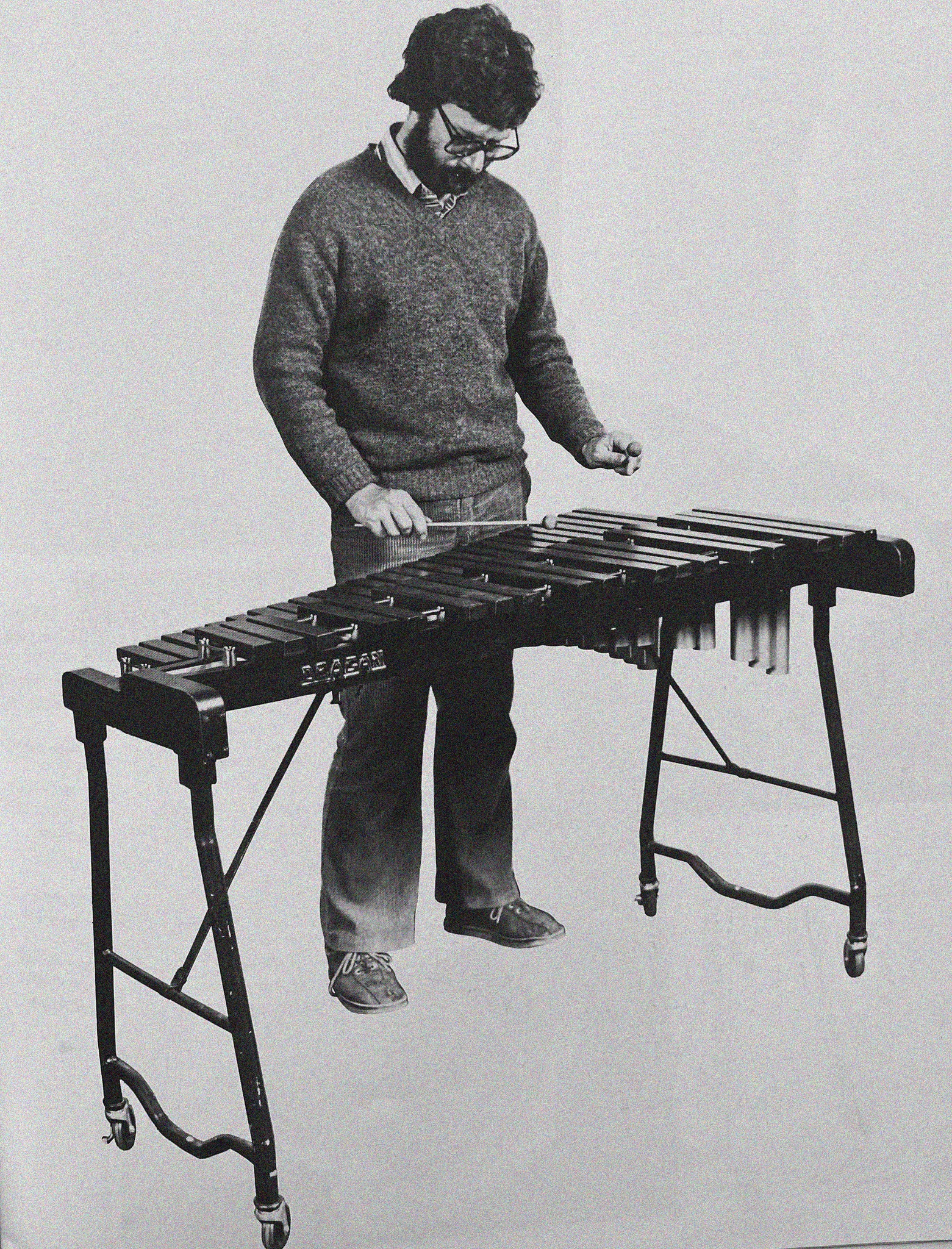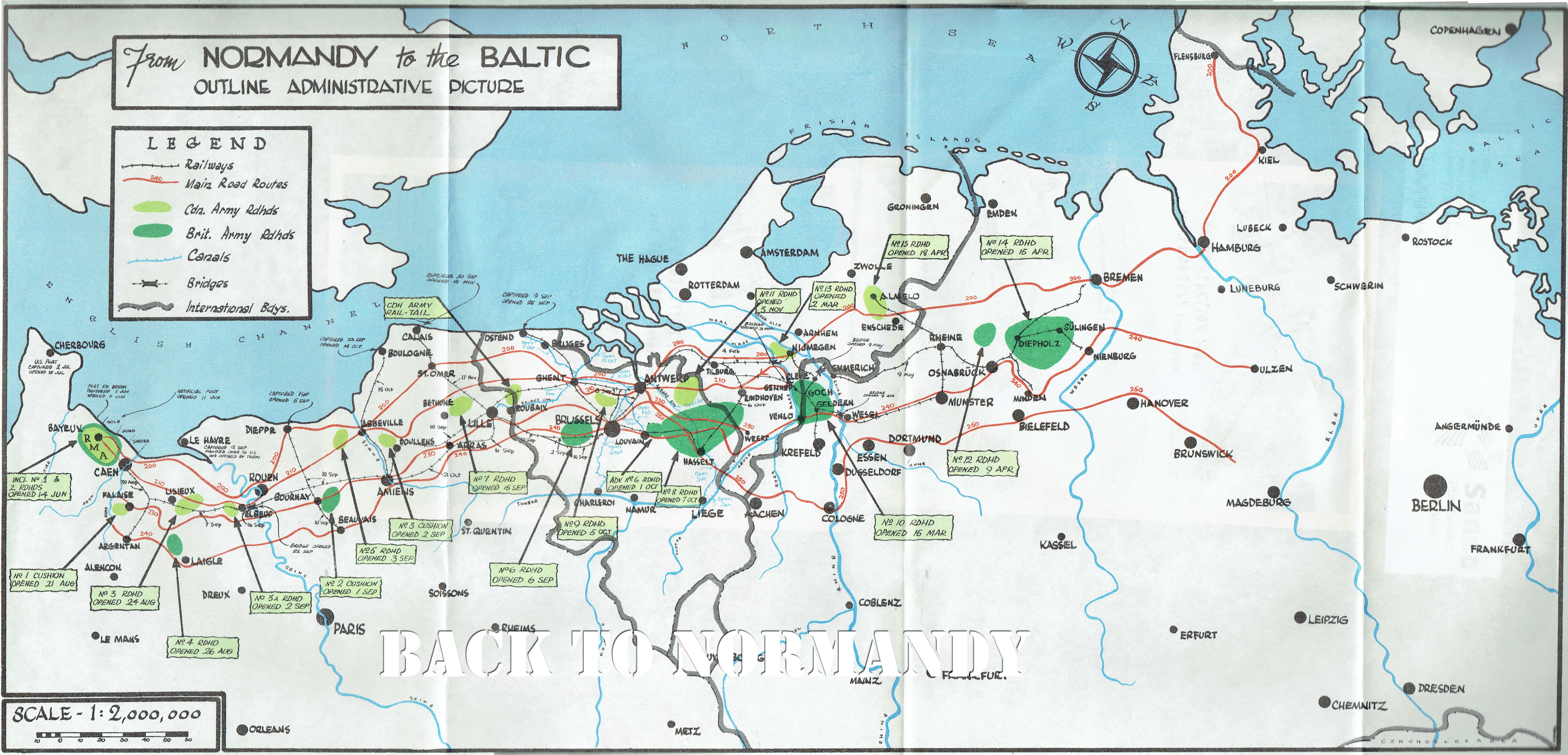PREFACE
At 0800 hours on 6 June 1944 the first elements of the Allied Expeditionary Force operating under the direct command of the C-in-C 21 Army Group to whom the Supreme Commander had assigned the responsibility for the assault and opening phases of the campaign, had landed successfully on the coast of NORMANDY.
At 0800 hours on 5 May 1945, eleven months later to the day, the order to cease fire became operative on the BRITISH fronts as all the GERMAN forces opposing 21 Army Group in North-West GERMANY and HOLLAND had surrendered unconditionally to Field Marshal Montgomery.
On 8 May 1945 the GERMAN High Command surrendered all their remaining land, sea and air forces unconditionally to the Allies, thus giving up their conquered territories of DENMARK, NORWAY and the CHANNEL ISLANDS without a battle. In these eleven months the Allied Armies had broken through the Atlantic Wall, liberated the countries of FRANCE, BELGIUM, HOLLAND and LUXEMBOURG, and advanced halfway across GERMANY to make contact with the RUSSIAN Armies in the SOUTH and centre and reach the BALTIC in the NORTH.
Scope of Administrative History
Behind these operational triumphs lay many achievements of logistical planning and support of this greatest combined operation of all time. The object of this history is to provide an account of the administrative problems that faced the Staff and the Services of HQ 21 Army Group during this period and the ways in which they were surmounted.
While in certain instances it will be necessary to describe in detail the measures taken by specific formations, as a general rule the administrative efforts of the Second British and First Canadian Armies and HQ L of C, can only be dealt with summarily since their activities were necessarily controlled and encompassed by the policy formulated by HQ 21 Army Group.
Similarly, although Civil Affairs; Military Government was formed to facilitate and aid the operations of the land forces by controlling and administering the civil populations, this history makes no attempt to describe its activities in detail, as it is considered that they were conducted on such totally different lines from the normal support of the Armies, that they can best be portrayed in a separate account.
Included in this history is a chapter comprising the main lessons learnt during the campaign. Although in certain cases these refer specifically to single phases, normally only those lessons learnt from the campaign as a whole have been included in order to avoid drawing false conclusions through over-emphasis of any one particular aspect.
Division of the History
The history falls into four phases :—
PHASE I comprises the assault, the battle of CAEN and the completion of the build up for the break- out from the beach head. The approximate dates of this phase are from 6 June to 25 July 1944.
PHASE II includes the break-out from the NORMANDY bridgehead, the pursuit of the enemy across the SEINE and up to the line of the MEUSE-ESCAUT canal, the capture of ANTWERP and finally the airborne operation (Operation MARKET GARDEN) which was a supreme effort to force river crossings over the MAAS and the RHINE, and thus turn the right flank of the GERMAN defence line. This phase can be said to have been completed on 26 September 1944.
PHASE III covers the establishment and stocking of the Advance Base in BELGIUM including the opening of the great port of ANTWERP and the measures necessary to oppose the GERMAN winter offensive. The approximate date of completion of this phase is 14 January 1945 when stock-piling for Phase IV began.
PHASE IV. This phase, commencing on 15 January 1945 and ending on 8 May 19-15, may be entitled “The Last Round”. It contains the operations to cross the River MAAS and capture the territory up to the River RHINE (Operations VERITABLE and GRENADE) and also Operation PLUNDER which was the assault across the RHINE. It concludes with the advance to the BALTIC by Second Army, the operations of First Canadian Army in Northern GERMANY and HOLLAND, and the final surrender of the GERMAN forces opposing 21 Army Group on 5 May 1945.
At this image “E” will be found a map illustrating the outline of administrative development in support of the campaign from NORMANDY to the BALTIC.
Composition of the BRITISH Force
At the moment when the Supreme Commander gave the order for the operation to commence, Second Army and First Canadian Army, both of which remained throughout the campaign under the command of HQ.
21 Army Group consisted of:
- SIX armoured divisions (including one POLISH armoured division)
- TEN infantry divisions
- TWO airborne divisions
- NINE independent armoured brigades
- TWO Special Service (Commando) brigades
- GHQ, Army and Corps Troops
- Certain Allied Contingents.
Clearly a force of such size required a considerable number of support (administrative) troops to operate the ports, railways, communications and installations on its lines of communication. The operation of ports and railways and IWT was controlled centrally from HQ 21 Army Group in accordance with normal practice, but HQ L of C relieved HQ 21 Army Group of the onus of local administration and of the control of certain other installations.
Administrative Responsibility of HQ 21 Army Group
HQ 21 Army Group was responsible for:
- Co-ordinating the general administrative planning of ALL Services both AMERICAN and BRITISH in the early stages.
- Informing Supreme Headquarters Allied Expeditionary Force or War Office of the special needs of the Forces until such time as the Armies could formulate firm demands, thus enabling action to be taken to ensure that there were sufficient stores in UK to meet these demands when they were received.
- Maintaining the BRITISH Forces and making the appropriate demands for this purpose on the War Office.
Responsibility for the co-ordination of the detailed administrative planning and formulation of administrative policy was delegated by the Commander-in-Chief to the Major-General I/C Administration.
During the planning stage it was considered desirable to attach an AMERICAN administrative element to HQ 21 Army Group in order to ensure that US and BRITISH planning marched in step. This element consisted of a Brigadier-General assisted by representatives of the G-1 and G-4 Sections of the AMERICAN General Staff.
The Brigadier-General was appointed deputy to the MGA and his administrative staff section worked alongside, but not integrated with, the ‘A’ and ‘Q’ staffs of HQ 21 Army Group.
During the course of this history it is proposed to deal with the US administrative planning and arrangements only when they directly affect the BRITISH administrative picture.



